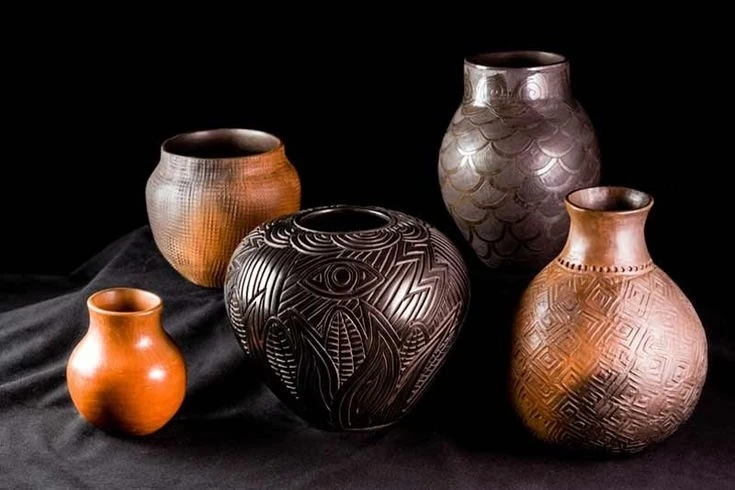Indian pottery is more than just clay molded into shapes; it’s a reflection of the country's rich cultural heritage and history. For centuries, artisans have shaped mud and earth into beautiful works of art, each piece narrating a story of tradition, skill, and creativity. Whether you are an art enthusiast or simply curious about cultural crafts, exploring the different types of Indian pottery is like taking a journey through time. So, are you ready to discover the magic of Indian pottery?
Introduction to Indian Pottery
Indian pottery is an ancient art form that dates back to the Indus Valley Civilization. It is not just about utility but also about beauty and tradition. From beautifully crafted vases to intricately designed plates, Indian pottery showcases a blend of creativity and cultural significance. But what makes it so special? Let’s dive deeper to find out.
The Legacy of Indian Pottery
Indian pottery is steeped in history and tradition. For generations, artisans have passed down their skills, keeping the art alive. Each region in India has its unique style and technique, reflecting the local culture and lifestyle. Just like how a storyteller weaves words to narrate tales, Indian potters mold clay to express their heritage.
1. Terracotta Pottery
Terracotta pottery is one of the oldest and most popular types of Indian pottery. Made from red or brown clay, it is baked in the sun or in kilns, giving it a distinct rustic look. This pottery is known for its simplicity and elegance, often used for making toys, vases, and figurines. Its earthy feel and natural color make it a favorite among art lovers.
Famous Regions:
- West Bengal – Known for Bankura horses and other figurines.
- Uttar Pradesh – Popular for decorative tiles and vases.
2. Blue Pottery
Originating from Jaipur, Rajasthan, blue pottery is known for its vibrant blue color and intricate floral designs. Unlike other types of pottery, it is made without clay, using a mix of quartz stone powder, glass, and multani mitti (Fuller's earth). The bright blue, green, and white designs make it a perfect addition to modern home décor.
Special Features:
- It is non-porous and does not crack easily.
- Famous for decorative tiles, bowls, and vases.
3. Black Pottery
Black pottery is a unique form of Indian pottery originating from Nizamabad, Uttar Pradesh. It is made using special clay and baked in traditional kilns, giving it a shiny black finish. The glossy appearance is achieved by rubbing mustard oil and other natural elements. Its intricate silver patterns are achieved using a mixture of zinc and mercury, giving it a stunning metallic look.
Popular Items:
- Flower vases
- Kitchenware such as bowls and plates
4. Khurja Pottery
Hailing from Khurja in Uttar Pradesh, Khurja pottery is known for its colorful and vibrant designs. It is typically made using ceramic and glazed with bright colors like blue, green, and yellow. The beautiful floral patterns are inspired by Persian art, making it highly appealing for home décor.
Why It’s Special:
- Highly durable and heat resistant.
- Widely used for crockery, flower pots, and tiles.
5. Longpi Pottery
Longpi pottery, also known as Black Stone Pottery, is made by the Tangkhul Naga tribe of Manipur. It is crafted using a combination of ground black serpentine stone and clay, giving it a dark, matte finish. Unlike other pottery styles, Longpi pottery is molded by hand without a potter’s wheel, adding a touch of uniqueness to every piece.
Key Highlights:
- It is naturally non-toxic and safe for cooking.
- Known for its minimalistic and elegant designs.
Why Indian Pottery is Unique
Indian pottery stands out because of its diversity in styles and techniques. Each piece is a result of meticulous craftsmanship, reflecting the cultural identity of its region. The vibrant colors, intricate designs, and traditional methods make Indian pottery a collector's delight.
Modern Influence on Indian Pottery
While traditional Indian pottery has maintained its charm, modern artists are experimenting with new designs and techniques. From contemporary home décor to functional kitchenware, Indian pottery is evolving while keeping its cultural roots intact.
Where to Buy Indian Pottery
You can find authentic Indian pottery in local markets and government emporiums across India. Additionally, many online platforms offer a wide range of traditional and modern pottery items. Jaipur, Khurja, and Manipur are popular hubs for buying genuine handmade pottery.
Conclusion
Indian pottery is not just about aesthetics but also about preserving a cultural legacy. The intricate designs and traditional methods used by skilled artisans make each piece a work of art. Whether you are decorating your home or looking for a unique gift, Indian pottery is sure to add a touch of elegance and history to your collection. So, why not explore this beautiful art form and bring a piece of India into your life?
FAQs
1. What is the oldest type of Indian pottery?
Terracotta pottery is considered the oldest form of Indian pottery, dating back to the Indus Valley Civilization.
2. Where is blue pottery made in India?
Blue pottery is famous in Jaipur, Rajasthan, known for its vibrant blue and white floral designs.
3. Is Indian pottery safe for cooking?
Yes, traditional pottery like Longpi pottery is non-toxic and safe for cooking.
4. What makes Khurja pottery unique?
Khurja pottery is known for its colorful floral patterns and durability, inspired by Persian art.
5. Can Indian pottery be used as home décor?
Absolutely! Indian pottery pieces are perfect for home décor, adding a traditional yet contemporary touch.


